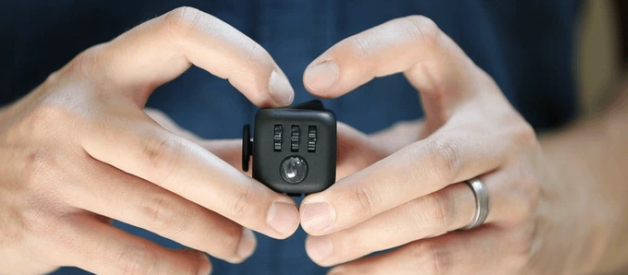?Stop it.?
?Stop.?
When I was a kid, my mom would constantly tell me to stop shaking my legs. A nervous tic of mine that drove her mad because ?shaking legs causes loss of wealth,? at least according to Chinese superstition.
Imagine my delight when I came upon the Kickstarter campaign for a nifty little toy called the Fidget Cube last September. It describes itself as a ?desk toy for anyone who likes to fidget.? Each side has something you can fidget with: roll, slide, click, spin, etc.
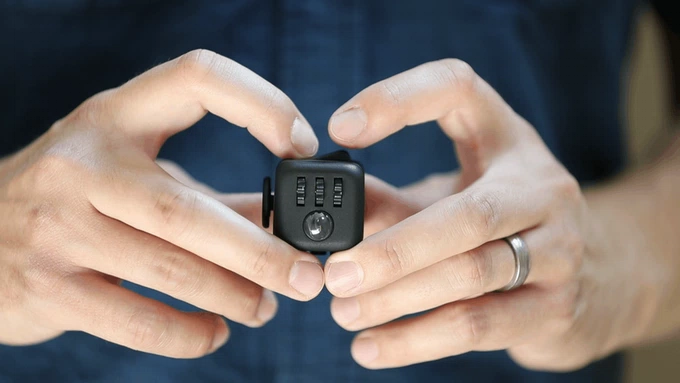 The Fidget Cube
The Fidget Cube
It was $22 after shipping for one, which is pretty expensive considering the kind of product it is. A small, plastic desk toy.
Regardless, I backed it. I have a soft spot for Kickstarter projects: I?ve backed over 50. Quite a few flat out failed and others were delayed by insane amounts of time, but having launched my own products before, mainly software, I understand that making things is hard. Almost everyone stops at ?I have an idea.? To actually go and try to execute takes a lot of guts and hard work. I like to support people that have the courage to actually try to turn an idea into reality.
Considering my predilection for fidgeting, I thought I?d actually use it too. Turns out I wasn?t the only one. The Fidget Cube went on to become one of the most successful Kickstarter campaigns ever, to the tune of $6.5 million dollars. The delivery date was set for December 2016.
It?s early January 2017. The Fidget Cube still hasn?t shipped. They?ve mentioned delays in their backer emails due to manufacturing problems with quality. Not a big deal. Par for the course as far as I?m concerned when it comes to crowdfunded products as these things are very hard to predict, and I care about quality.
I happen to find myself in Shenzhen, China: the hardware manufacturing capital of the world. I?ve been considering manufacturing my own products, so I went to meet a few people, learn about the ecosystem, and see how feasible designing and manufacturing my own product really is.
A great documentary by Wired to learn about Shenzhen if you?re curious.
The heart of Shenzhen is the electronics market area called Huaqiangbei. You can buy almost anything there. A huge swath of what you see on Amazon like headphones, smartphone accessories, and more can be found there for a third to a quarter of the price. I?ll never look at electronics the same ever again, cost wise.
Imagine my surprise when I reach a floor to find almost every store there selling fidget cubes. Every other wall was filled with them. Not just normal fidget cubes, but even 12 sided monstrosities.
Taken from my Instagram: instagram.com/jobosapien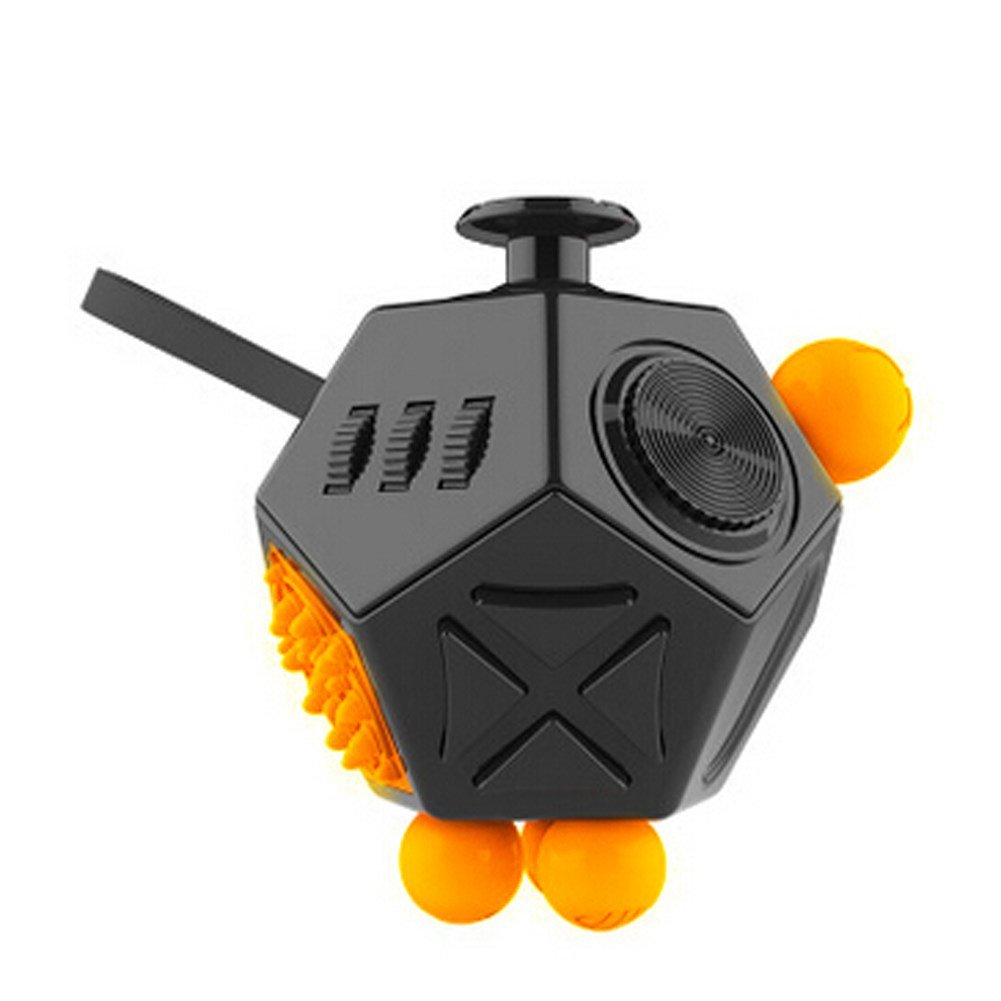 Weird 12 sided version that I saw (and is now also on Amazon)
Weird 12 sided version that I saw (and is now also on Amazon)
Dafuq? The Fidget Cube campaign did mention copycats, but I didn?t realize it was this egregious.
I asked a store how much they were: 12 RMB, a bit less than $2 USD. I bought 5 to give to friends.
What you have to understand is that China is very good at quickly and cheaply manufacturing almost any good you can think of, especially if it?s a simple product with no internal circuitry or associated software, which the Fidget Cube falls under. However, the quality is typically lacking and they aren?t good at thinking of their own ideas so the second they see high demand for any new product they will copy it as quickly as possible. It?s one of the downsides of public crowdfunding sites like Kickstarter and Indiegogo. Capitalism at its finest.
Other famous quickly copied crowdfunding campaigns: Stikbox and 3Doodler
It?s hard to defend against this. China rarely respects patents or trademark laws. The people I met in Shenzhen had too many stories to count of copycats, essentially saying it?s hard to avoid unless you have an extremely good relationship with the factory.
I then discovered that one of the potential reasons for these Fidget Cube knockoffs was ?Jack.? He saw the successful Kickstarter campaign and because he was already a veteran at copying products he was able to manufacture and start shipping knockoffs sooner than Fidget Cube themselves, generating over $345k from a $70k investment within 2 months.
I?m not sure what came first: the factories noticing themselves this was a hot product on Kickstarter and then making it, or ?Jack? asking the factories to produce them who then turned around and sold it to distributors everywhere.
Regardless, the speed at which it happened is astonishing.
Fidget Cube responded to concerns about fakes to backers by first saying they were scams to then saying they stand by the quality of their product over the fakes.
Fair thing to say, and I like the confidence. However, many backers were angry that they paid so much more when they could?ve essentially gotten a fairly similar product for less than half the price.
Last week on February 1, 2017, I received the actual Fidget Cube. I could finally answer: Is the quality of the real product worth it over the fake as they claim?
Unboxing of the real Fidget Cube
The branding and messaging is cute. The box could?ve been smaller though.
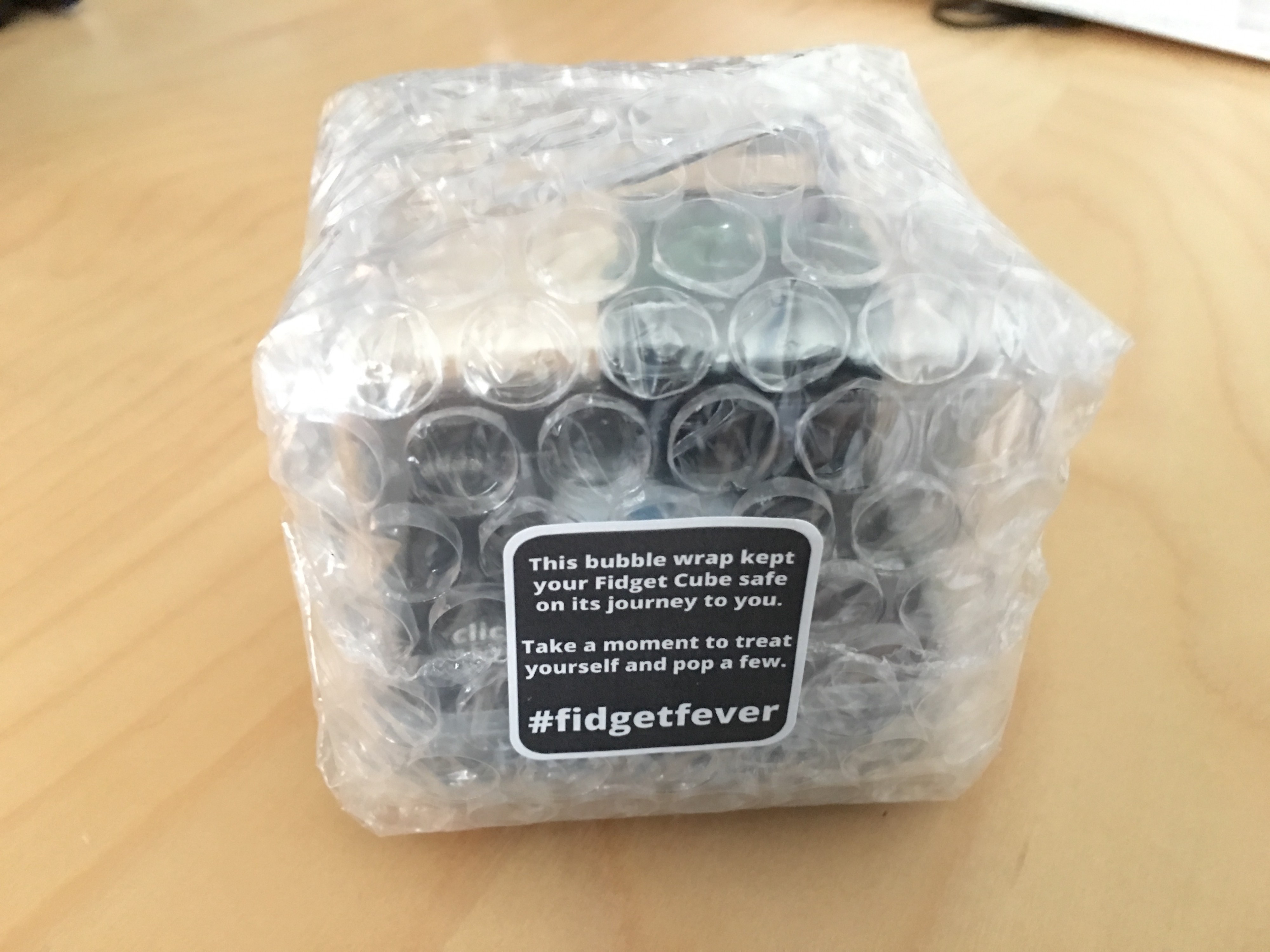
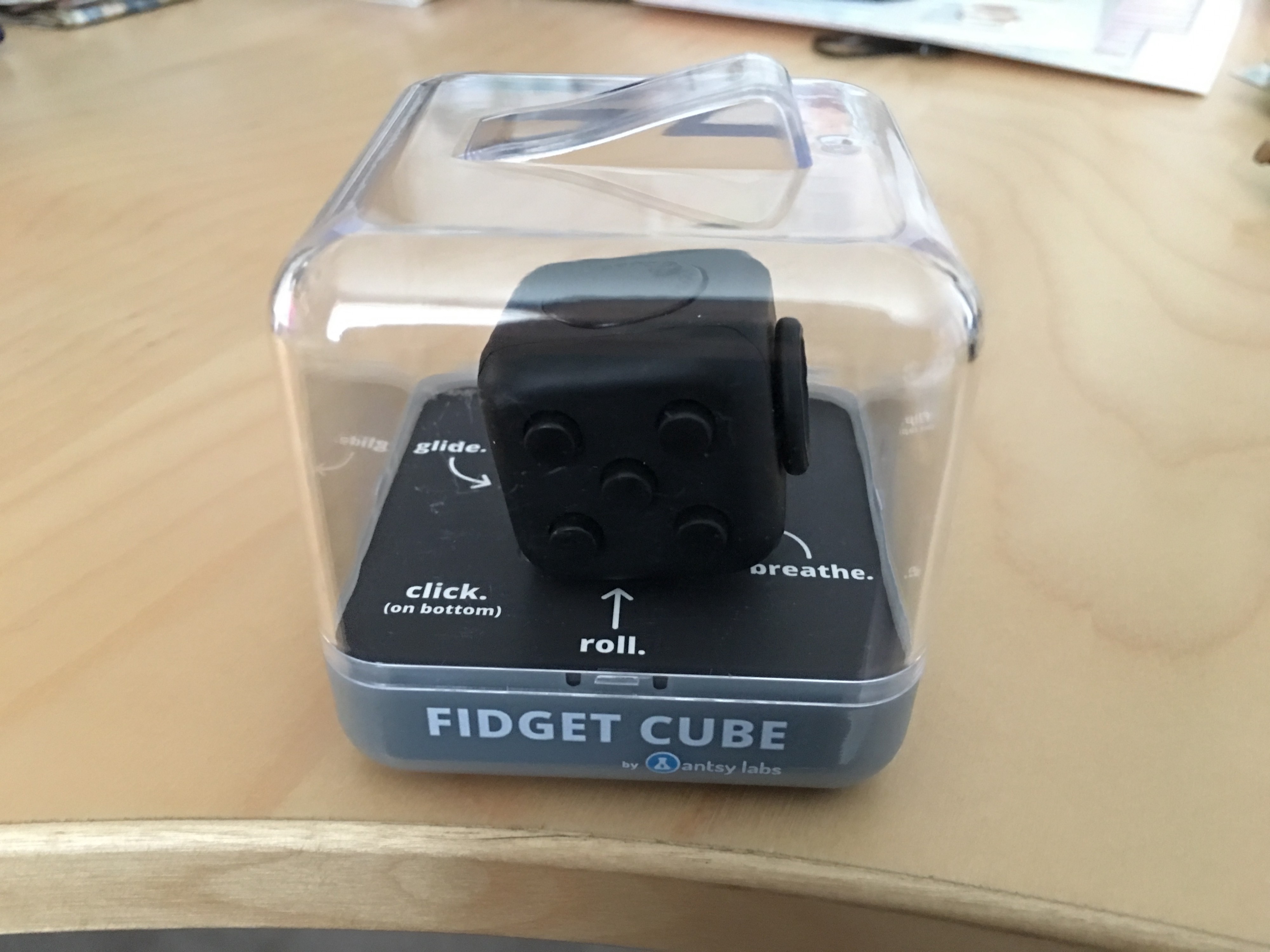
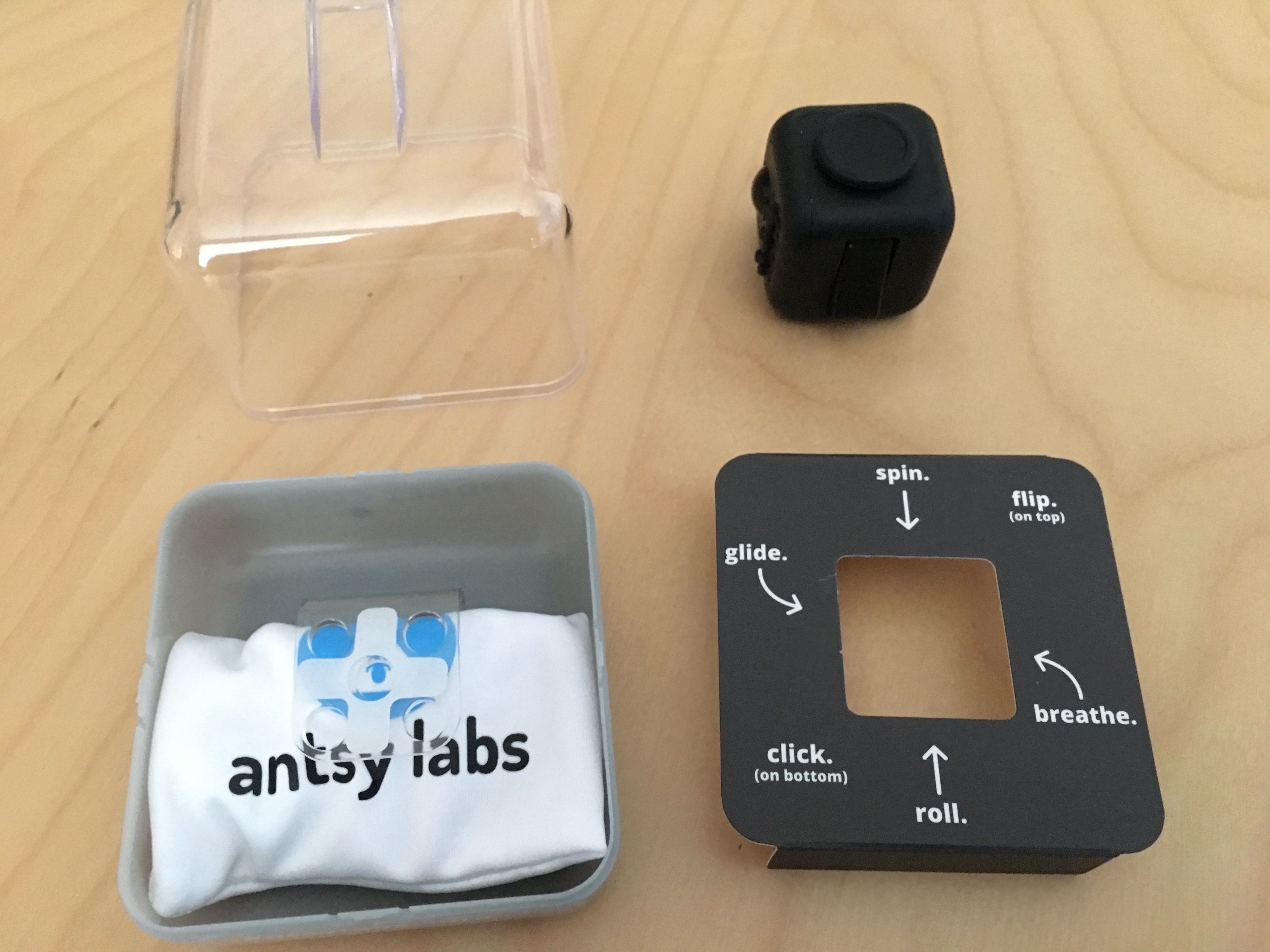

Side by side comparisons of the real Fidget Cube vs. the fake
The left is real, the right is fake.
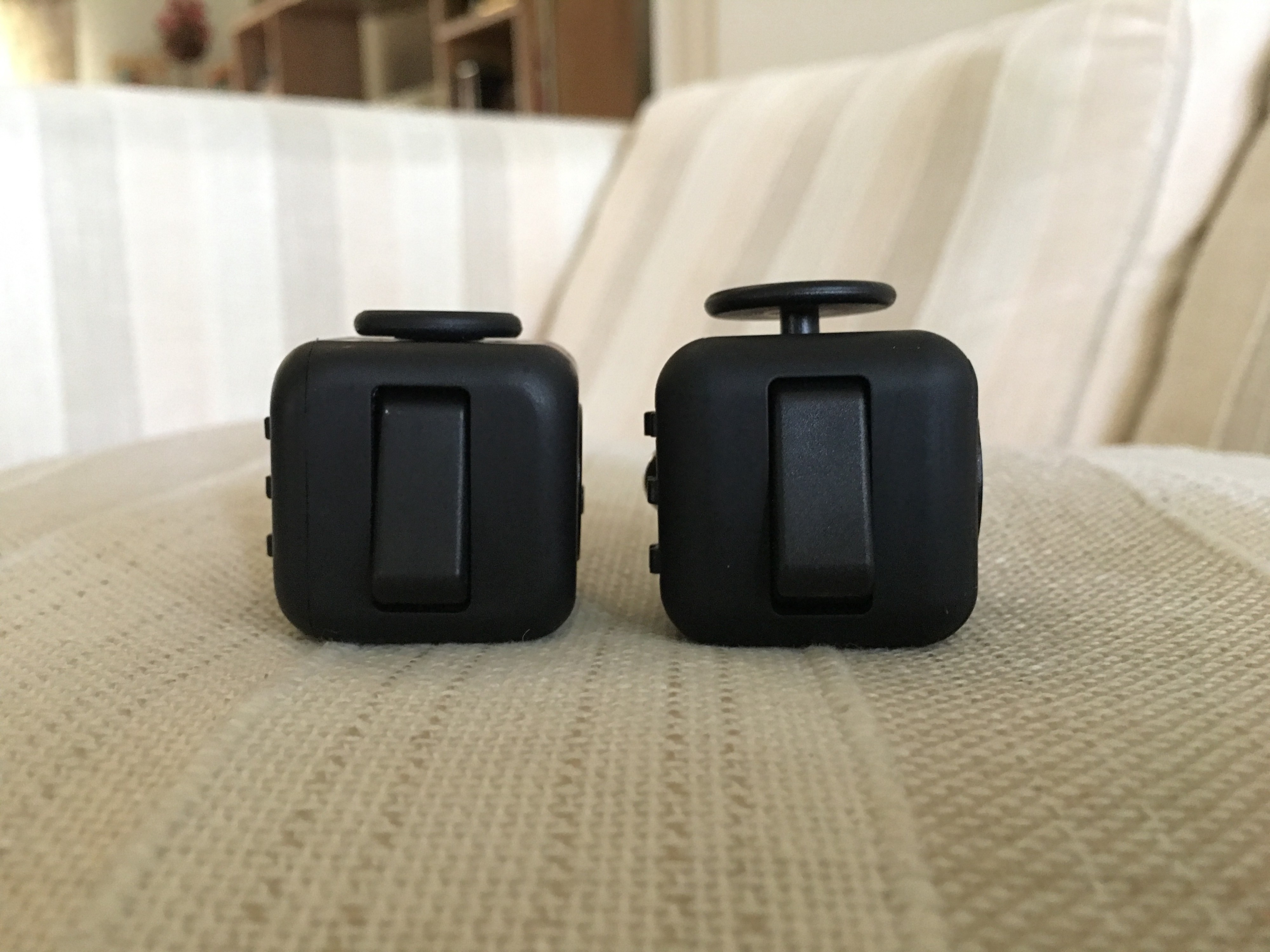
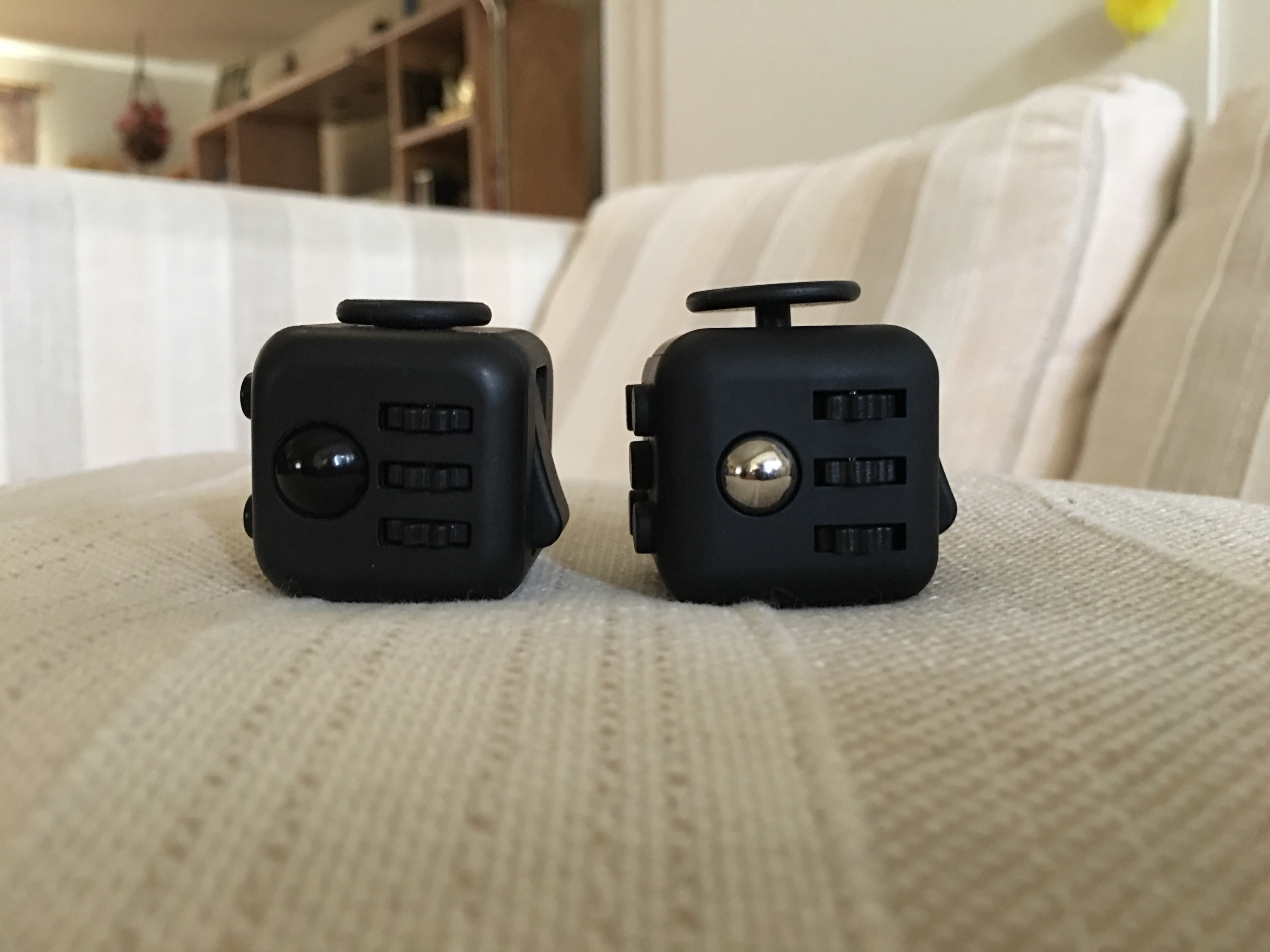
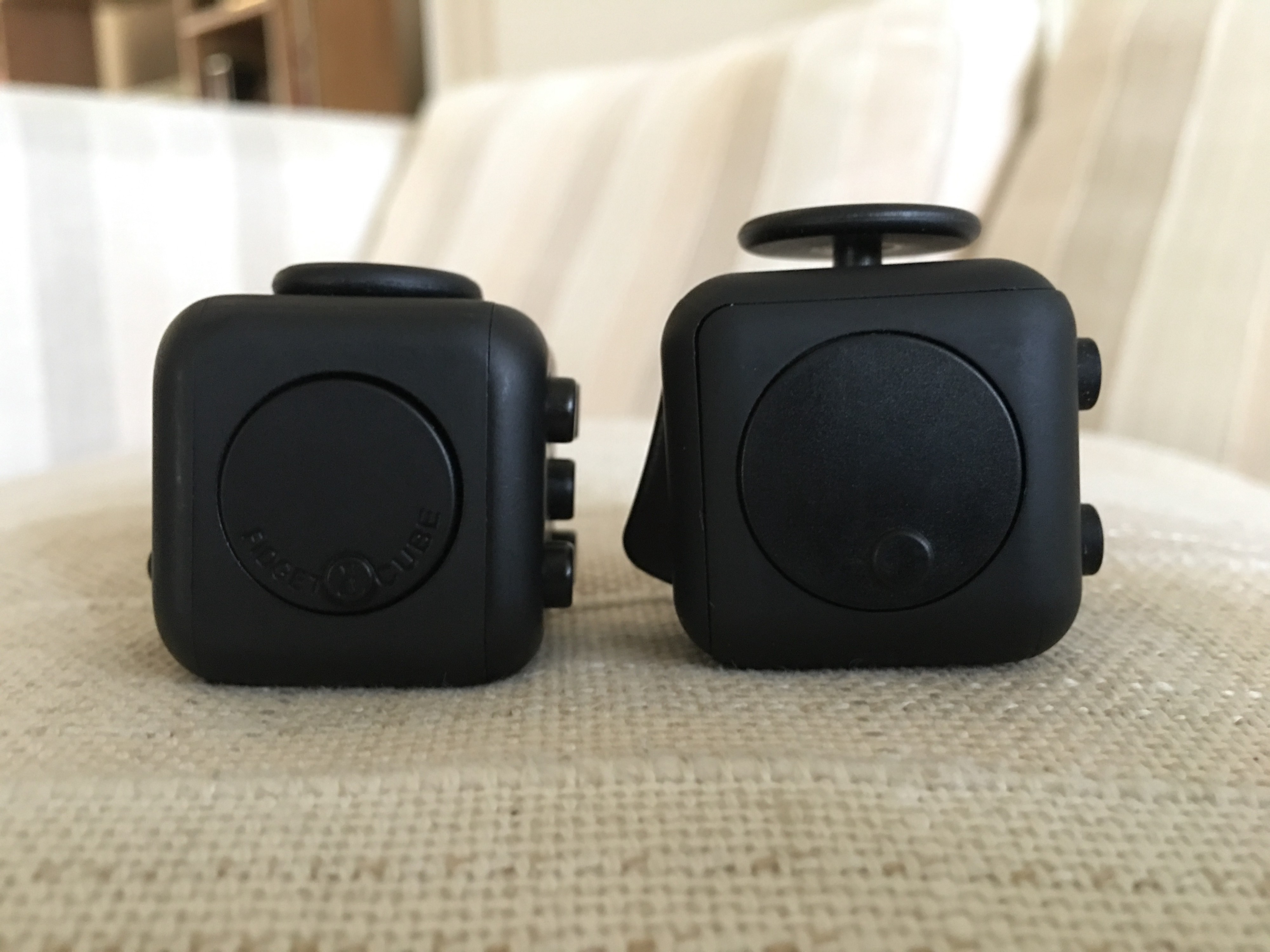
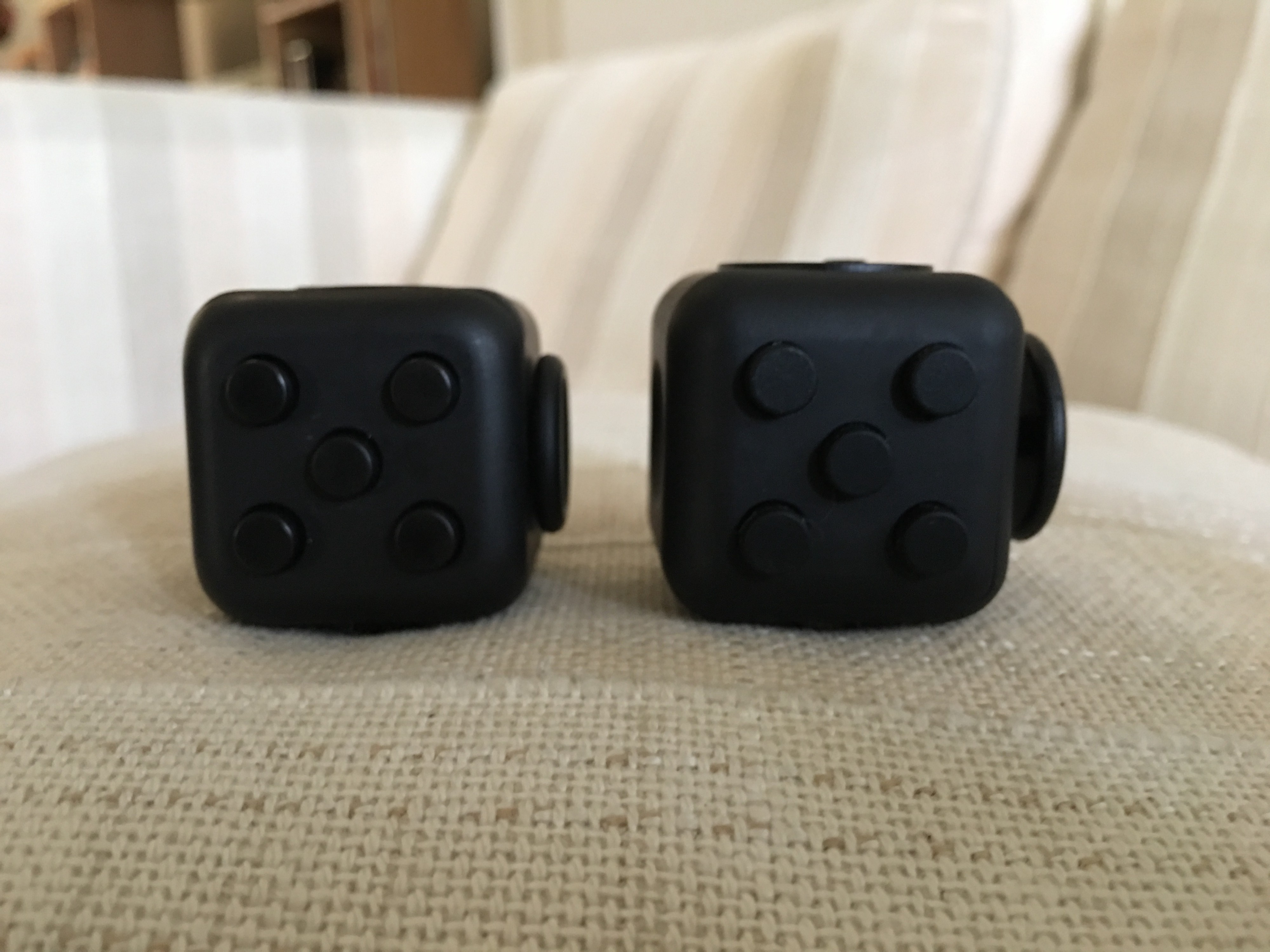
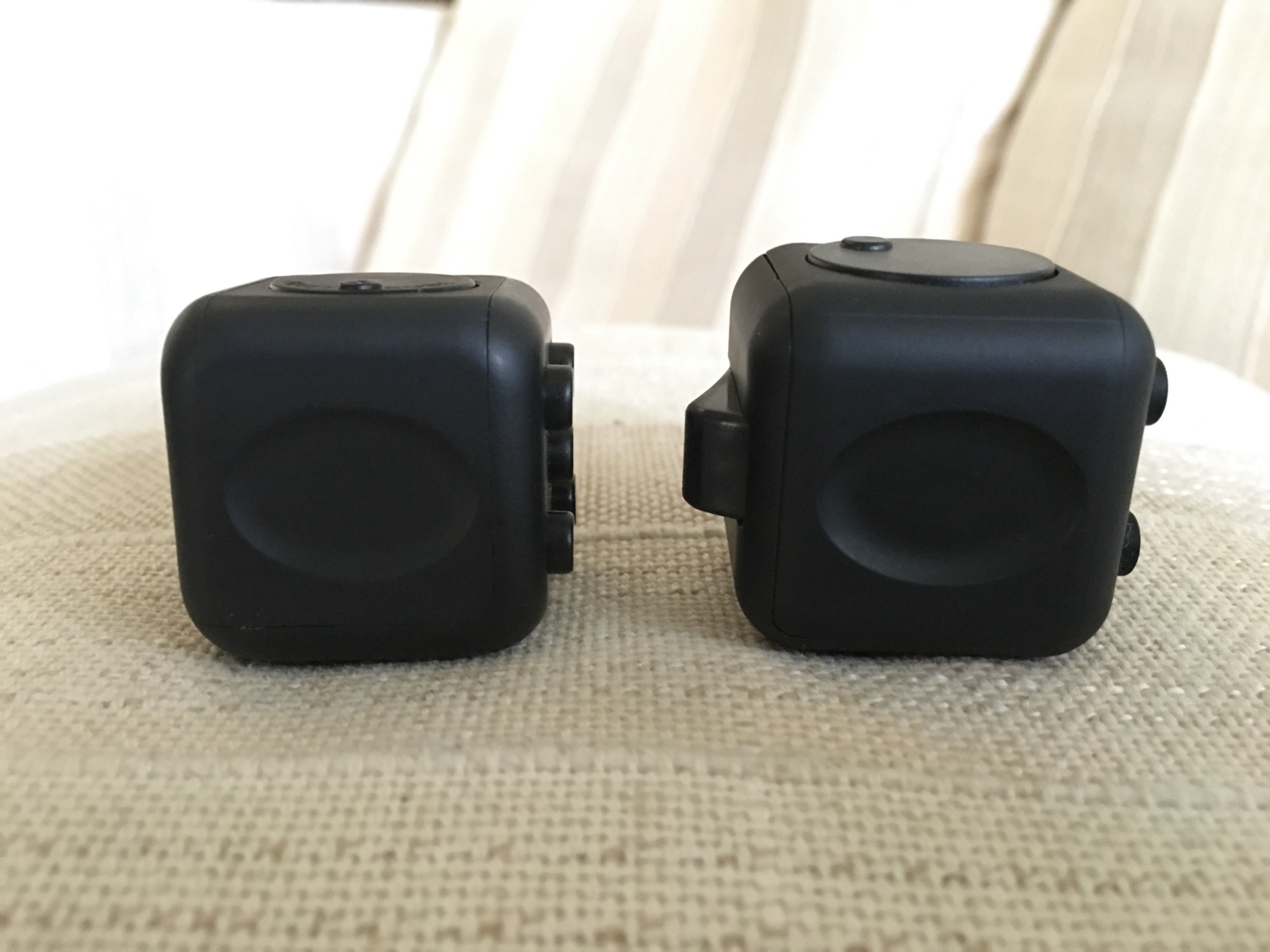
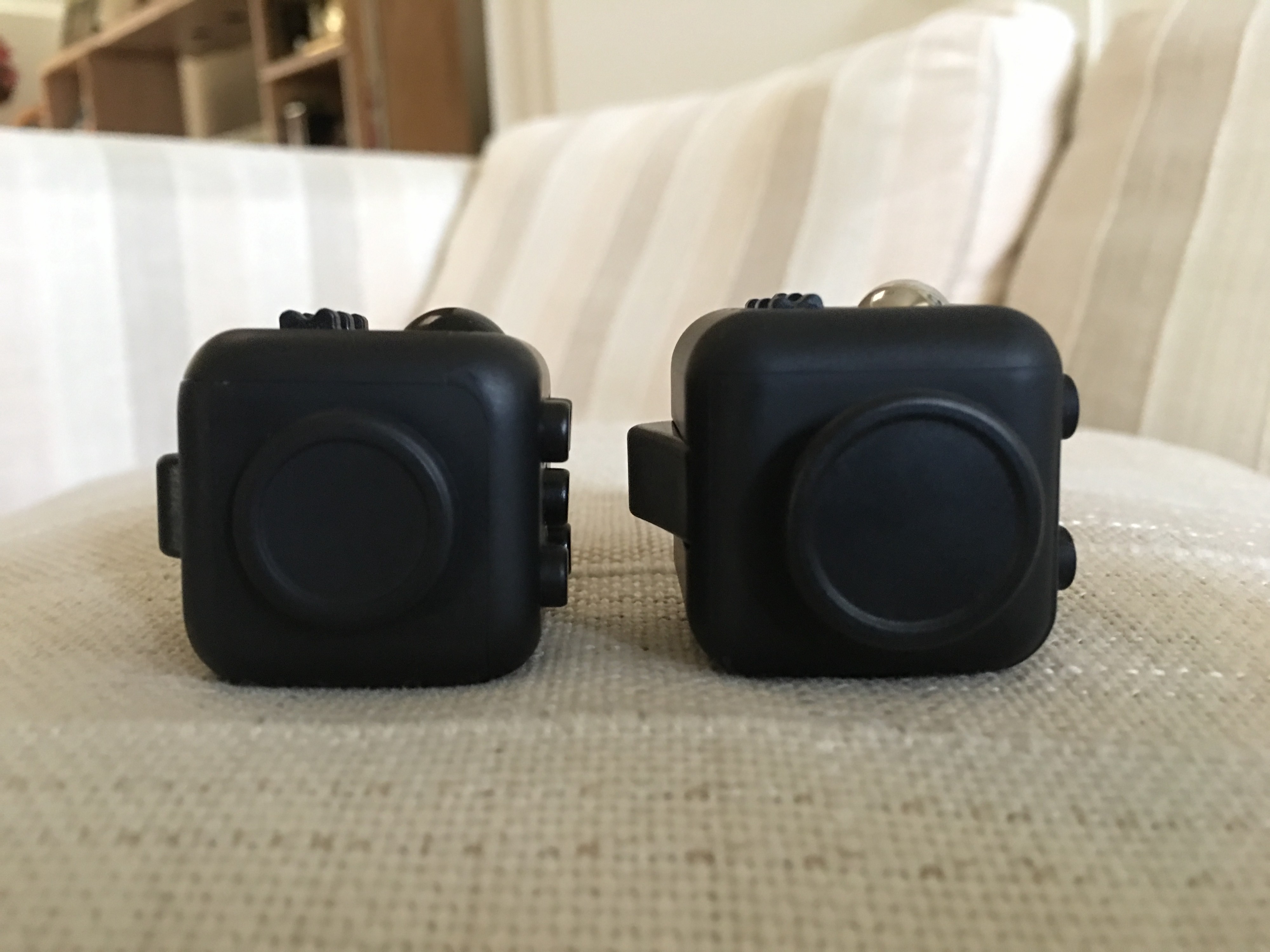
The Differences
- Visually, they?re very similar. The fake is slightly bigger, its metal ball is uncolored, and the joystick sticks out a bit further. The real one?s spin wheel has a logo on it.
- For the real Fidget Cube: the build quality is slightly sturdier, its joystick is more flush and easier to use, and the spin dial has notches to it when the fake?s is completely smooth. Not sure which I prefer for that feature.
- The fake one?s clicker buttons depress further and have a more satisfying click feeling, so I prefer that feature over the real one?s.
- The rest is virtually the same.
Price comparison
- Fake: In China, they?re about $2. On Amazon in the US, the range seems to be $4 to $12 with shipping. Let?s use a middle of the range $8 for this post.
- Real: As a Kickstarter backer, I got it for $22 with shipping. On their website today, you can get it for $25 with shipping.
- For comparison?s sake, let?s assume the prices of how much you?d pay right now within the US to get it: $8 for the fake vs. $25 for the real.
- The question: Is the real one worth 3x more than the fake?
As someone who loves quality products where every detail is thought through, I can confidently say the real one is better? but not 3x better. The product itself is maybe 20% better, and I?ll tack on another 20% for the more thoughtful packaging and branding, so a 40% better experience overall.
To be fair, getting the details right beyond the basic functionality is often the hardest and most expensive part, but it?s dependent on the product.
Here?s how I look at it:
- Surface area: The number of features and details a product has.
- Depth: How much those features and details can be improved.
- Paint: The branding that wraps together and communicates the product?s features, values, and story.
For example, let?s compare a Honda Civic with an Aston Martin Vanquish. They?re both cars that get you from point A to point B, but there are thousands of features and details the Aston Martin improves over the Honda, and some are a lot better. 568hp vs. 158hp. Seats made of full grain leather from free range cows vs. polyester fluff. Aston Martin?s branding exudes premium decadence and refinement vs. Honda?s pedestrian, everyman tale. It?s a big difference, and the prices depict that: $18K vs. $287K, a 16x difference. Cars, as a product category, have a lot of surface area, depth, and paint to differentiate on.
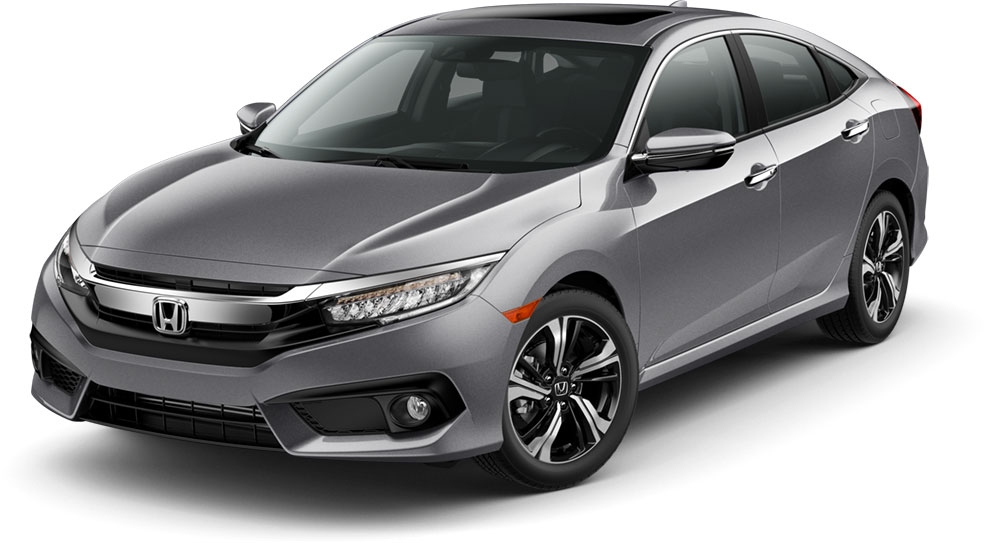
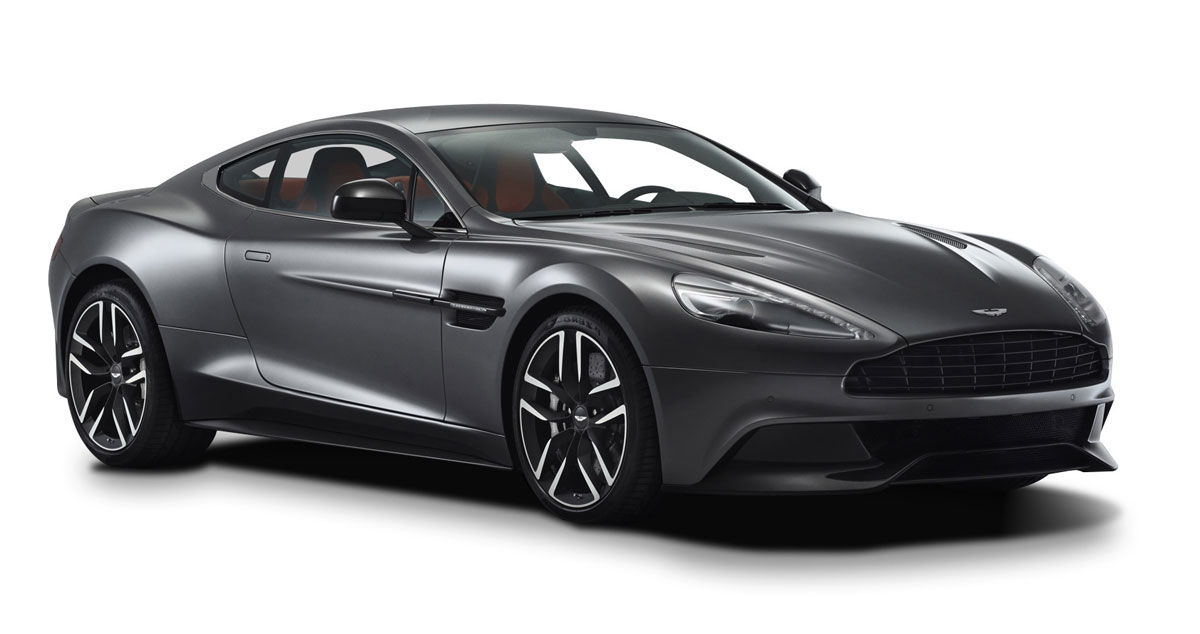
This is an extreme example, and obviously the Fidget Cube is just a toy but there?s a clear limit to how much better it can be so their claim that the quality of their product is worth it over the fake unfortunately doesn?t ring true, let alone a 3 to 5 times price difference.
For people that don?t appreciate the details, price is their main driving factor. They just want something that works, so for them the fakes are more than good enough.
Ultimately, I sympathize for Fidget Cube. It?s a great idea and I?ve had fun playing with it. It?s unfortunate and unfair that someone?s hard work in designing a thoughtful product can be ripped off so quickly and easily. It ruins the incentives for people to innovate and think of new ideas.
How can one potentially defend against copycats? At least when it comes to physical consumer products.
- Have an idea that?s too complex to copy: If you have a ?hard tech? product like the goTenna, it?ll take too much money and time to copy so chances of copycats are low. Having associated software, like an app or operating system, also helps (so basically any Internet of Things product like the Nest thermostat or Fitbit). It?s the reason you?ll never see any true iPhone knockoffs. The outside may look like an iPhone, but the software can only be a reskinned version of Android and not truly iOS.
- Have a considerably better product: Spend so much time getting the details right that it?s not worth it for others to copy you. Startup folk often like to say your product has to be ?10x better? than the competition.
- Good branding: People will still buy Apple or Nike because they believe in the brand and know their real products will still be the best quality while also serving as a status symbol.
- File patents and trademarks in places that do respect intellectual property like the US and Europe: By doing this, you ensure that at least the copycats can?t be sold there. Fidget Cube claims to have a patent pending, so once that goes through the copycats will probably be taken off Amazon.
If you enjoyed this post, I now write about travel products on https://www.wanderium.com. Check it out and let me know what you think ?.
